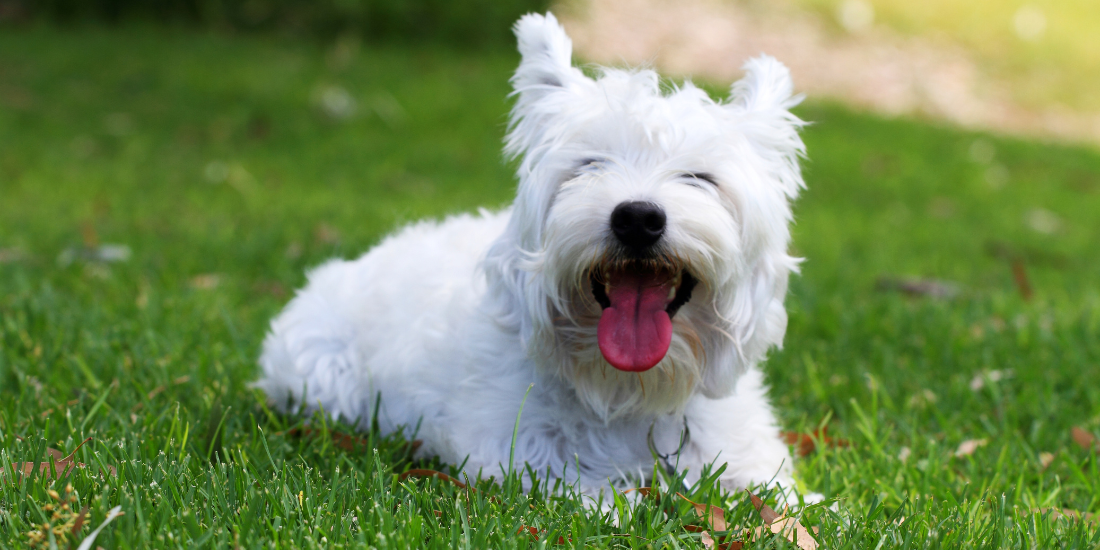
As temperatures drop and chilly winds blow, we must help our furry friends stay happy, healthy, and warm. In this article, we'll explore how winter weather affects your pet's dietary needs, offering practical tips and expert advice to keep them nourished and cosy. Learn everything you need to know, from calculating calorie requirements to choosing the right food. So grab a cup of tea, snuggle up with your pet, and let's wander the path to winter pet wellness.
Understanding Your Pet's Thermoneutral Zone
Our furry friends are equipped with a unique comfort zone known as the thermoneutral temperature zone. This zone represents the range of temperatures where they don't need to expend any extra energy to maintain their body temperature. However, this range isn't one-size-fits-all and varies depending on several factors.
For most dogs, this sweet spot falls between 20 and 30 degrees Celsius. However, breeds like Huskies can handle much colder temperatures, around 0 degrees Celsius, while brachycephalic dogs, such as Bulldogs, can really struggle in warmer conditions, over 25 degrees Celsius.
Coat length, density, size, age, health conditions, and acclimatisation all play a role in determining your pet's thermoneutral zone. Pets with lighter or no coats struggle in colder temperatures, while those with thick fur may struggle to regulate their body temperature in warmer conditions. Understanding this zone is vital to keeping your pet comfortable and healthy throughout winter.
Do Cats & Dogs Eat More in Winter?
While some pets may be fortunate enough to enjoy a stable indoor environment or live in regions with minimal temperature fluctuations, many face the reality of colder climates during the winter. In such cases, a tweak in their diet becomes necessary to accommodate the increased energy requirements for thermoregulation.
Do dogs and cats need more food in winter?
As temperatures dip below your pet's thermoneutral zone, their bodies work harder to maintain core temperature, necessitating a higher calorie intake. Without sufficient energy, they risk succumbing to hypothermia—a dangerous condition where the body can no longer maintain its temperature. To counteract this, your cat or dog needs more food and nutrients to stay warm and healthy throughout the chilly season, such as LifeWise Dog Turkey With Mixed Vegetable Grain Free Adult Dry Food, Advance Lamb and Rice Adult Dog Medium Breed Dry Dog Food and Advance Chicken and Salmon Multi Cat All Ages Dry Cat Food.
Staying Stylish and Safe: Winter Apparel for Pets
In recent years, the pet fashion scene has witnessed a boom, offering many options ranging from cosy coats to adorable booties designed to keep your furry companion both fashionable and warm during the colder months. While these accessories may seem like mere fashion statements, they can safeguard your pet's well-being.
In regions prone to frosty conditions and snowfall, unprotected paws are susceptible to dry, cracked pads and even frostbite. This is where booties step in, providing essential protection against harsh elements. So, don't hesitate to invest in stylish winter gear for your pet—it's not just about looks but about keeping them safe and comfortable in the chilly weather.
Adjusting Exercise and Diet for Winter
As the winter season sets in, you'll likely notice changes in your pet's activity levels. Dogs may find the cooler weather invigorating, prompting longer walks and more outdoor playtime. Conversely, some pups may shy away from chilly walks, decreasing activity levels.
So, do dogs need more food in winter? Adjusting your pet's calorie intake according to its activity is essential. If your dog is more active during winter, it will require extra calories to fuel its adventures. On the other hand, if it's less active due to bad weather, dogs can eat less in winter to help maintain a healthy weight.
Pet health monitors like Heyrex can be invaluable tools, providing insights into your pet's exercise habits and environmental conditions. With this data, you can make informed decisions about their diet and activity levels.
You might be wondering whether cats need more food in winter. For our feline friends, winter often means longer nights and increased indoor lounging. As cats curl up for extended naps, their calorie needs may decrease. Adjusting their food portions or opting for lower-calorie options can help prevent winter weight gain. In some cases, cats may even benefit from switching to a diet food during the colder months, reverting to a maintenance diet as spring approaches.
Calculating Your Pet's Calorie Needs
How many calories a day should my cat or dog eat? Determine your pet's daily calorie requirements by following these simple steps:
1. Determine Your Pet’s Resting Energy Requirement (RER)
The RER represents the calories needed to sustain basic bodily functions while at rest. Use the formula: RER = 70 x (Body weight in kg) x 0.75.
2. Factor in Activity Level
Multiply the RER by an activity factor based on your pet’s exercise habits:
Sedentary (little to no exercise): RER × 1.2
Lightly active (1-3 hours of exercise per week): RER × 1.4
Moderately active (3-5 hours of exercise per week): RER × 1.6
Very active (more than 5 hours of exercise per week): RER × 1.8
Working dog: RER x 2
3. Adjust for Specific Needs
Consider specific factors such as weight management, age, or life stage. For overweight pets, use the ideal weight for calculation. Puppies, kittens, and pregnant or lactating pets may require special adjustments, often fed ad-lib. Consult your veterinarian for personalised guidance.
4. Choose the Right Food
Opt for premium, high-quality pet food that meets their nutritional needs such as Advance Healthy Weight Chicken With Rice Adult Dry Cat Food and Advance Chicken and Rice Healthy Weight Medium Breed Adult Dry Dog Food. Check the packaging for the calorie content per serving, typically listed in grams. Using scales for accurate measurement, remember that 1 cup is approximately 125 grams for most dry foods.
Consult Your Veterinarian for Personalised Guidance
Every pet is unique, and their dietary requirements may vary based on factors like age, breed, activity level, and health status. For personalised advice, it's best to consult your veterinarian. They can provide expert guidance on the appropriate calorie intake and dietary adjustments.
Monitor Weight Regularly
After making any changes to your pet's diet, whether it's adjusting the food type or portion size, it's essential to monitor their weight regularly. We recommend weekly or bi-weekly weight checks to confirm your pet's weight is moving in the desired direction or remaining stable. This proactive approach lets you address any concerns immediately and maintain your pet's optimal health.
Understanding Caloric Content in Pet Foods
When selecting pet food, pay attention to the calorie content per cup or serving size. Premium brands like Hill's Science Diet, Royal Canin, Eukanuba, and Black Hawk offer a range of options tailored to your pet's specific needs.
Dog Foods
Adult Dog Foods
Typically contain around 350-450 calories per cup.
Senior Dog Foods
Formulated with reduced calorie content, averaging around 350 calories per cup.
Performance Dog Foods
Designed for active dogs, providing a higher calorie content of 450+ calories per cup.
Weight Control Diets
These formulations are lower in calories, ranging from 270-300 calories per cup.
Cat Foods
Premium Cat Foods
The calorie content varies between approximately 350 and 550 calories per cup, depending on the brand and formulation.
Indoor Formulas
Specifically formulated for indoor cats, with reduced calorie content averaging around 320 calories per cup.
Senior Cat Varieties
These are tailored to the needs of senior cats, and the calorie content ranges from 280 to 480 calories per cup.
Reading Labels
Always read the labels carefully to determine the calorie content of the pet food you choose. Understanding the caloric density of the food allows you to accurately adjust your pet's diet to meet their nutritional requirements and maintain their optimal health.
Nurturing Your Pet Through the Winter
Understanding whether your cat or dog needs more or less food in winter is essential for their well-being as the chill sets in. Knowing their thermoneutral zone, monitoring their activity levels, and choosing the right food will help them to stay healthy and happy throughout the colder months. Remember, every pet is unique, so consulting your veterinarian for personalised advice is always a good idea. With proper care and attention to their dietary needs, your fur baby can enjoy a cosy and nourishing winter season by your side.

About The Author
Dr Terryne Loney
Consultant Veterinarian | Pets: Roni, Barker and Corbett (Cats)
I have 30 years experience in companion animal practice and part of a nationwide veterinary senior leadership team. With a background of interest in all aspects of animal care, emotionally and physically, I am an advocate for wellness and fear free handling as well as dentistry, internal medicine, dermatology, oncology, and safe anaesthesia during surgery.
Enjoyed This?
Explore more ....



